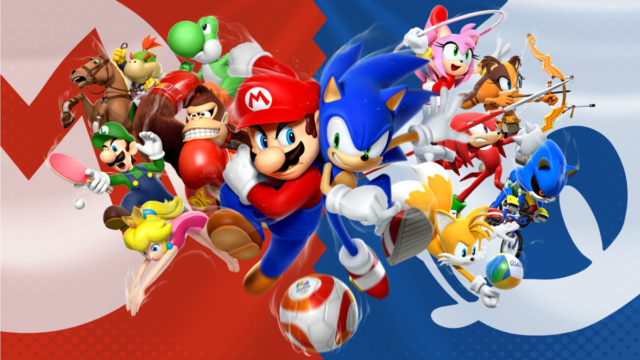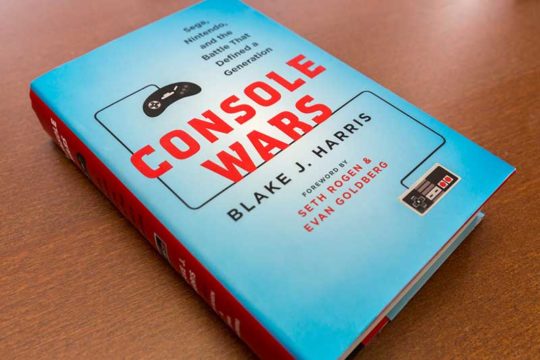
Nintendo versus Sega. If you grew up during the early 1990s, there was no greater rivalry. The debate was fiercely argued around every schoolyard across North America. These days, Sonic Mania Plus is a giant hit on Nintendo Switch and the early relationship between Nintendo and Sega stands in stark contrast. The book Console Wars, by Blake J. Harris, however, harkens back to the early days of that rivalry, giving fans an in-depth look into the decisions that turned a lopsided contest into a neck-and-neck race.
One of the most unique things about Console Wars is the way it gives focus to industry veterans from the west. While names like Shigeru Miyamoto and Yuji Naka have been elevated to household status over the years, many of the western minds that helped propel the industry forward during its infancy have been forgotten. Console Wars follows a number of these industry veterans, but Tom Kalinske takes center stage for the majority of the book. As the president of Sega of America from 1991-1995, Kalinske helped change the company from a relative unknown to a one-time industry leader. Harris paints Kalinske and his team much like Steve Wiebe in The King of Kong: the scrappy upstart looking for a shot at the title.
Unlike that documentary, Console Wars doesn’t have a villain. Harris never paints any of the book’s many characters as malicious actors. Instead, the book features a number of people struggling to shape the industry in the way they think is for the best. Sega’s desire to push the market forward and see it grow resulted in a humbled Nintendo forced to adapt to stay relevant.

The amount of research Harris has done for the book is pretty exhaustive. Speaking to two hundred former employees of Sega and Nintendo, Harris paints a strong history of each of the industry’s biggest players, from inception, up through Sega Saturn’s disastrous launch in 1995, and every major event in between. The time period covered, while seemingly small, saw a number of major milestones for the industry, including the debut of Sonic and the formation of the ESRB. The amount of detail contained within the book is truly stunning, and even the most ardent fans will likely walk away with some new knowledge.
Bubbling beneath the surface of the events in chronicled in the book is an undertone of racism. As previously stated, Harris is careful not to ascribe malicious intent to any of the book’s major players, but racism certainly seemed to permeate the industry in both subtle and not-so-subtle ways. Whether it was the American media’s reaction to Nintendo’s purchase of the Seattle Mariners or the way Sega of Japan treated their American counterparts (and vice versa), it’s impossible not to draw some conclusions about the cultural clashes contained within. There are no definitive answers, particularly since Harris had to contend with a pair of notoriously tight-lipped Japanese companies and interview subjects that were probably less than inclined to reveal their own prejudices; in fact, some exchanges in the book’s reconstructed dialogue almost seem to protest too much.
“Come on, I can’t really believe that your dislike of the Japanese-”
“It’s not like that. I’m not racist or anything,” Race broke in. “It’s the whole culture. It’s the passive way they do things. It’s the fact that when I come into work in the morning, it’s not uncommon to discover that they’ve made a decision in the middle of the night that cancels out everything I did yesterday.”
It should be noted that this is one of the book’s tamer exchanges between Kaliniske and Steve Race regarding Sega of Japan. Regardless of rationale, Harris seems to imply throughout the book that those intentional or unintentional prejudices forever altered the futures of both Sega and Nintendo. An inherent lack of trust seemed to exist both between Sega of Japan and Sega of America, and NCL and Nintendo of America. Harris frames this as the cause of Sega’s inevitable demise; had Sega of Japan learned to trust Kalinske’s better instincts, Sega could still be in the console market. As for Nintendo, the publisher learned to trust the instincts of western counterparts like Tony Harman, leading to the development of Rare’s Donkey Kong Country and a revitalized Nintendo.

Much has been made about Harris’ use of dialogue in Console Wars. The book uses dialogue reconstructed based on the interviews Harris conducted for the book, and while it’s mostly passable, certain exchanges either ring false or just come across a bit stilted or convenient, as in the case regarding racial animus. At the end of the day, the reconstructed dialogue is helpful more often than not (and will likely help with the upcoming film adaptation), but it will likely grate on some readers.
Books about the video game industry have rapidly grown in popularity over the last decade. The majority of these books, however, tend to focus on the Japanese side of development, giving little focus to the west. Console Wars approaches the narrative from a different perspective, shining a light on the rise and fall of Sega of America. The book isn’t flawless, but Harris’ research and the way in which he constructs a central narrative around the days of the Super Nintendo and Sega Genesis is insanely compelling. No matter how much you might think you know about the industry, it will teach you things you didn’t expect to learn. This one is a must-read.




 ShareThis
ShareThis





